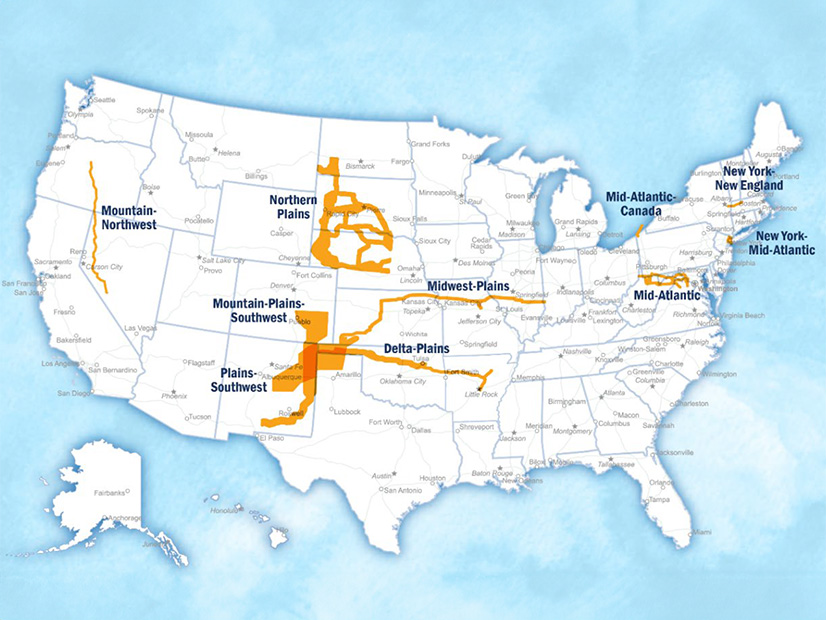
The Biden administration unveiled 10 proposed electric transmission pathways to expand the nation’s power grid and one of them runs across Oklahoma.
They are formally called 10 potential National Interest Electric Transmission Corridors (NIETCs) to accelerate the development of transmission projects in areas that present what Energy Secretary Jennifer Granholm called “an urgent need for expanded transmission.”
“At more than a century old, our power grid is showing its age, leaving American consumers to bear the costs of maintaining it with frequent and longer power outages from extreme weather,” said Granholm. “The Biden-Harris Administration is leveraging every tool to expand transmission and deploy more reliable, affordable, and clean power in every pocket of the nation.”
It is also being described as a project where the federal government will undertake “never-before-used” federal authority to fast-track and fund the major transmission grid projects. Funding will come from President Biden’s Investing in America agenda and it could involve billions of dollars.
The corridor that could directly affect Oklahoma is the Delta Plains, a 645-mile long corridor that runs across all of Oklahoma and to Arkansas. It is described as an interregional corridor between the Southwest Power Pool and Midcontinent Independent System operator that could facilitate cross-interconnection transmission.
In announcing the massive projects, the Energy Department said it determined that more high-voltage power lines and grid infrastructure are needed to expand clean energy deployment, lower electricity costs and forestall the risk of grid blackouts driven by extreme weather.
The designation of the corridor across Oklahoma, one that will enter the Panhandle and exit near the northeast part of the state, is a first step in a process that will include several rounds of feedback from the public, regulators and regional grid operators before being finalized. The Energy Department stated that once the corridors are locked in, something that could be achieved by the end of the year, the government could more easily lend money for the projects.
What it did not answer were possible questions regarding the use of eminent domain to claim the land where the transmission lines would be built and whether competitive bidding would be required for the installation of the projects.
“We’re serious about building out the infrastructure we need to tackle the climate crisis — and building it right by gathering public input early on in the process,” John Podesta, senior advisor to the president for clean energy innovation and implementation, said in a Tuesday briefing with reporters.
The 10 potential NIETCs, informed by DOE’s 2023 national transmission needs study, include:
- Delta Plains: A 645-mile-long corridor spans portions of Arkansas and Oklahoma. This interregional corridor between the Southwest Power Pool and Midcontinent Independent System Operator could facilitate cross-interconnection transmission.
- Mid-Atlantic: This proposed corridor consists of multiple parallel sections, each up to 180 miles long, within the PJM Interconnection in portions of Maryland, Pennsylvania, Virginia and West Virginia. It largely parallels existing 500-kV transmission facilities and could help meet future demand growth, DOE said.
- Midwest-Plains: This potential 780-mile corridor in parts of Illinois, Indiana, Kansas and Missouri includes portions of an existing 345-kV transmission right-of-way and touches the PJM, MISO and SPP grids. The designation could help speed clean energy integration, DOE said.
- Mountain-Plains-Southwest: The 540-mile long corridor, including portions of Colorado, New Mexico and Texas, could help address congestion between the Plains and Mountain regions that prevents delivery of affordable generation.
- New York-New England: This 60-mile corridor in Massachusetts and New York includes sections of existing state highway and high-voltage transmission right-of-way. Development in the proposed corridor could help address potential electricity shortfalls that can occur during extreme weather, it said.



